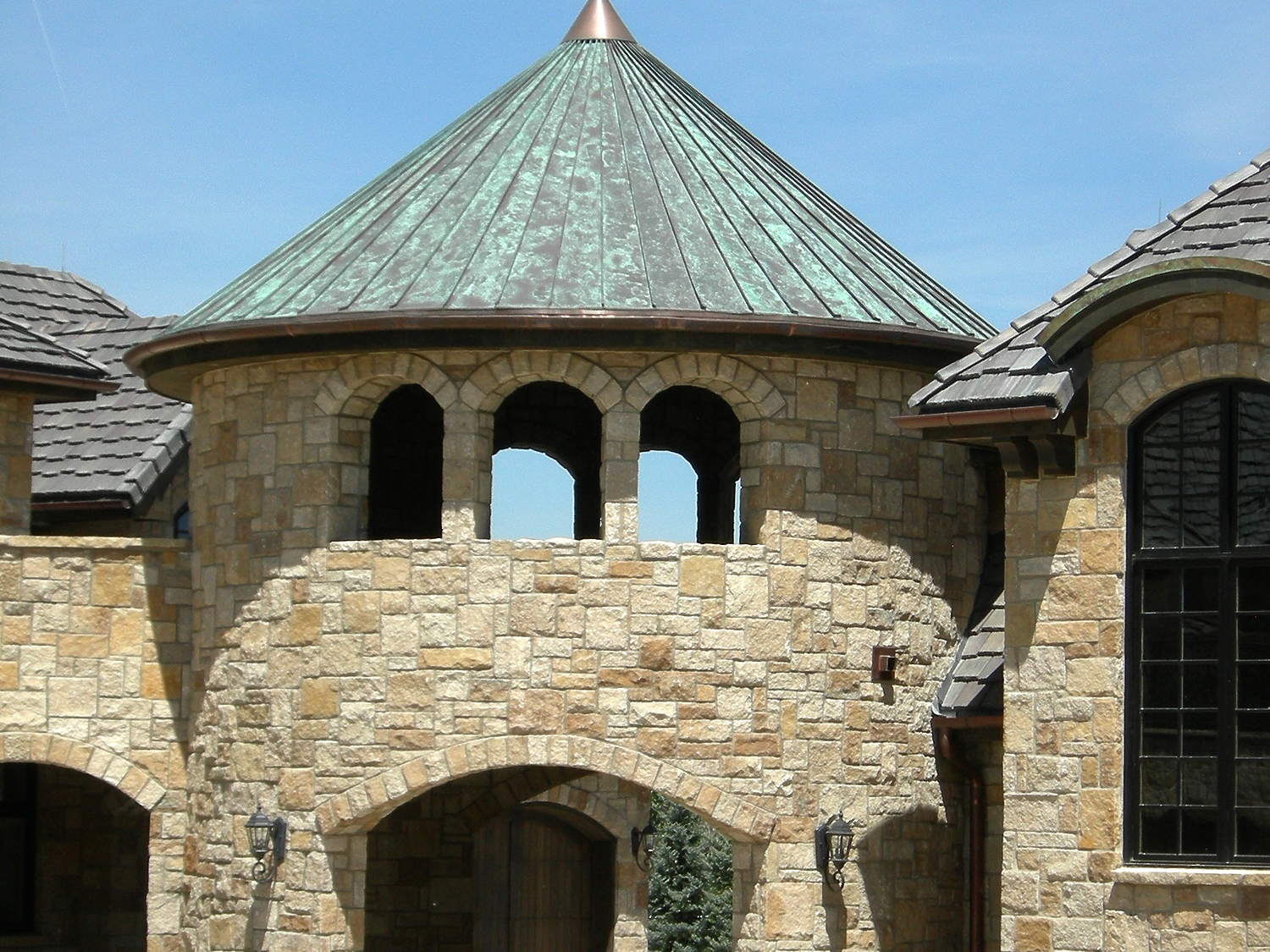

When installed, oxidation is continuous, but the rate fluctuates depending on the amount and duration of moisture present, temperature changes, contaminants in the air, the sunshine and even wind velocity. Fabricated goods may be further exposed to the weather during shipment to and storage at the construction site prior to installation. Once received by the installing contractor, the metal may be subject to storage conditions which promote continuing slow oxidation. Lengthy storage in unheated premises can, and often does, produce similar results. With moisture present on the metal surfaces, oxidation accelerates. Temperature changes can cause condensation within the paper wrappings inside the case. In transfer, the cases may be exposed to rain, snow or high humidity conditions on open loading docks. The first significant oxidation of the metal may occur when it is shipped. When stored in a heated mill or warehouse, oxidation (the principal cause of color change) proceeds at a slow rate, since the environment is relatively dry and the copper surface is usually still coated with a thin film of rolling oil.

Once a copper sheet is sheared to size in the mill, it is usually packed in wood cases with a lining of moisture resistant kraft paper. For both conditions, time is an important variable. One involves the storage conditions from the time of manufacture until the time of installation, while the second involves exposure conditions following installation. There are two principal sources for such color variations. Such color variations are common and usually transient tending finally to disappear as natural weathering proceeds. In addition, the multi-hued interference colors, previously mentioned, may persist for months rather than days or weeks.Īt times there is concern with regard to color variations during or immediately following installation of large expanses of copper roofing or flashing. It may require several years of exposure for the copper to achieve the desired shade.

In arid climates, due to the absence of moisture, the weathering process is significantly slowed. Where large areas are involved, therefore, natural weathering to the desired shade in encouraged, at which point, further color change can be retarded through the application of oil or wax to the weathered copper surface.Įxcept in arid climates, copper usually weathers to a uniform russet brown within six to 12 months of initial exposure to the atmosphere. It thus significantly increases the durability and hence, the service life of copper roofing and flashing.īecause of the nature of the reaction of the coloring solutions with the metal surface, application to large surface areas such as roofs, spires and domes is deemed impractical, since color uniformity is difficult to control and the hand application methods employed are expensive. The sulfate patina, on the other hand, is highly resistant to all forms of atmospheric corrosion, once it has had an opportunity to form completely. Neither the oxide nor sulfide films are particularly corrosion resistant. The progressive oxide, sulfide and sulfate films which develop on copper exposed to the atmosphere are quite thin – two to three thousandths of an inch – highly adherent, but with relatively low abrasion resistance. The critical variable, in all instances, is the dwell time of moisture on the exposed surfaces. Similarly, exposed horizontal surfaces develop the patina more rapidly than sloping surfaces which, in turn, patinate more rapidly than vertical surfaces. In arid environments, the basic sulfate patina may never form due to the lack of sufficient moisture to carry the chemical conversion process to completion. In rural atmospheres, where the quantity of air-born sulfur dioxide is relatively low, patina formation may not reach a dominate stage for from ten to 14 years. In industrial and seacoast atmospheres, the natural patina generally forms in from five to seven years.


 0 kommentar(er)
0 kommentar(er)
